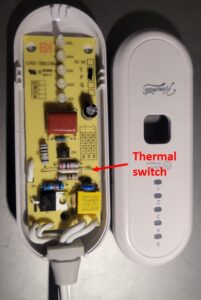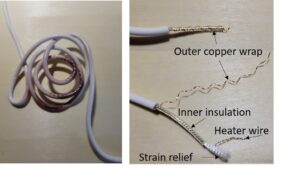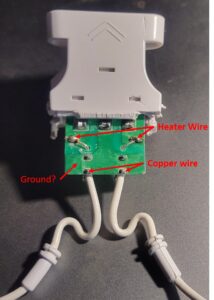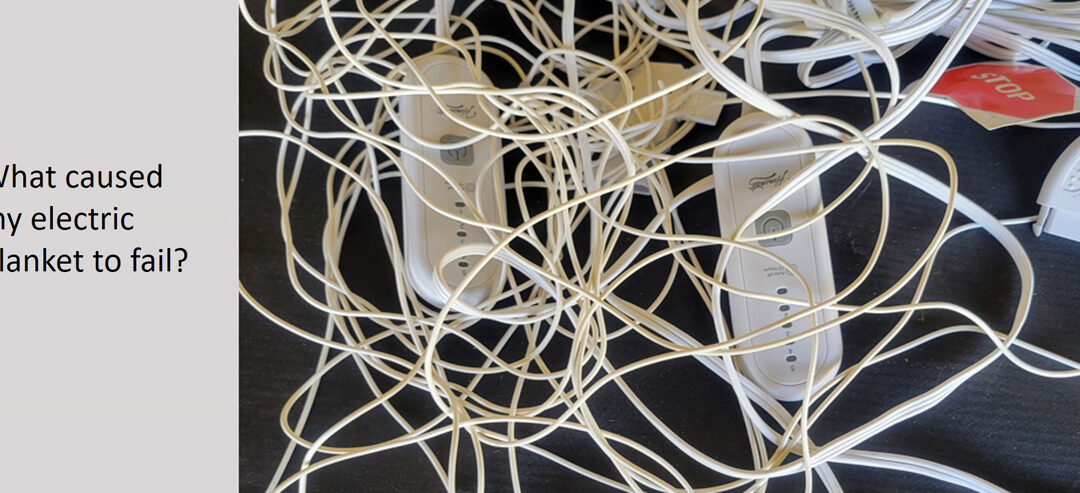My electric blanket was just your typical, everyday electric blanket, barely a year old and lightly used. It came with a promising five-year warranty, a promise that quickly dissolved into nothing when the supplier conveniently went out of business or changed their name, a mere six months later. Then, as fate would have it, on one of Texas’s rare chilly nights, my side of the blanket suddenly went cold. This is the story of my investigation into that failure.
I accepted the warranty as utterly useless, but until its untimely demise, it was exactly what I wanted. I was loath to part with it and shell out for a new one if there was any chance of revival. After all, I mused, how intricate could an electric blanket possibly be? Essentially, it was just like a toaster, only a lot less heat—simple, right?
My first attempt at troubleshooting involved swapping the controllers. Disappointingly, the controller from my side showed no signs of life on the working side either. It was dead. However, when I tried the operational controller on my side, lo and behold, there was warmth. It was a clear diagnosis: the controller was the culprit. Yeah, I should be so lucky.
 Being through, I checked the blanket’s connector next. My ohmmeter read the same resistance between pins 1 and 3 on both sides of the blanket. Intriguingly, on the left side, there was continuity to the center pin, while the right side’s center pin was open. This anomaly piqued my curiosity, though I was momentarily relieved that the heating wire hadn’t succumbed to a burnout.
Being through, I checked the blanket’s connector next. My ohmmeter read the same resistance between pins 1 and 3 on both sides of the blanket. Intriguingly, on the left side, there was continuity to the center pin, while the right side’s center pin was open. This anomaly piqued my curiosity, though I was momentarily relieved that the heating wire hadn’t succumbed to a burnout.
Endless hours scouring the Internet eventually unveiled schematics of the controller and hinted at a potential fix. The culprit seemed to be a one-shot thermal switch that disconnected once overheated. With my ohmmeter’s confirmation, I found the switch was indeed open. I couldn’t help but wonder why a non-resettable device was chosen over a resettable one—cost-cutting, perhaps?
A quick Amazon search later, I was armed with ten replacement devices. Two days and a mere ten minutes of soldering later, I was greeted by the reassuring glow of the controller’s light. Connected to the blanket, it provided warmth once more. That night, I would be enveloped in cozy warmth.
Yet, the triumph was short-lived. I awoke to a cold blanket, the controller once again unresponsive. Having already been down this road, I ordered a new electric blanket the following day. But the question nagged at me: what had I overlooked? The answer lay within the blanket’s wiring.
Extracting the wire was surprisingly straightforward, with my wife’s assistance. No burns were evident, yet the failure’s cause was glaringly apparent. A coil of wire, about an inch in diameter, formed five turns. The insulation wasn’t melted but bore the telltale signs of discoloration from a hotspot.

Obviously the coil intensified the heat but how did this hotspot cause the thermal switch to fail, especially when it was far from the controller? It dawned on me that the blanket’s wiring, much like a toaster’s, allowed current to flow through, heating the wire without causing burns due to the lower current. A closer examination revealed a meticulously layered structure: insulation, coiled copper wire, more insulation, and finally, the heater wire wrapped around a strain relief.
The manufacturer explained that the copper wire served as an EMI shield, a sensible addition given the rapid on-and-off heating control that could generate RF interference. Yet, how could the hotspot impact the thermal switch?
Inspecting the controller, I noted the thermal switch’s proximity to two large resistors. A hypothesis formed: could a connection between the copper and heater wires cause one resistor to overheat, thus tripping the thermal switch?
 Investigation confirmed that the center pin, linked to the copper wire, provided the missing link. On my side, the center pin was connected, creating a potential pathway for overheating. This was a stark contrast to my wife’s side, which remained unaffected and operational.
Investigation confirmed that the center pin, linked to the copper wire, provided the missing link. On my side, the center pin was connected, creating a potential pathway for overheating. This was a stark contrast to my wife’s side, which remained unaffected and operational.
The theory crystallized: the hotspot’s intense heat likely melted the inner insulation, creating a short between the heater and copper wires. This would, in turn, overheat the resistor, triggering the thermal switch—a safety mechanism designed to cut power and prevent more severe damage, albeit annoying.
One mystery remained: the origin of the wire coil. Could it be a manufacturing flaw or a consequence of washing and drying? Straightening it out, the coil was almost 12 inches of wire. That’s a lot of excess wire. How it got there remains a puzzle, but I’m resolved to straighten any lumps in my new blanket before use.
Final word: In reading reviews prior to purchasing my current blanket, many of the electric blankets lasted less than a year, and their warranty were just as valuable as mine was. I can’t say that they all failed for the same reason mine did, but after taking both controller and blanket apart, this is probably one of the major failure modes.
Even more interesting, while looking for my new blanket, I read a number of reviews and realized I’m almost an expert now. For example, when I looked at the reviews for this electric blanket, I did not see any dead controllers but I did see a few reviews describing flashing lights on the controller. Experiments with my own blanket showed me this happens when the heater in no longer connected to the controller. The most probable cause, either a broken wire or the connector not fully seated. Sort of like being privy to a secret code.
© 2024, Byron Seastrunk. All rights reserved.











Good post. I gave up on electric blankets years ago and switched to a bed warmer that goes between my mattress and the comfy mattress pad. We got a Sunbeam for king size with dual controllers and have had the same one at least 5 years. I did burn one up back when I had lightning at my house but am not blaming that failure on Sunbeam.
That was pretty interesting, I remember our blankets would last a long time years ago. It’s terrible they can’t manufacture something good these days.
I am so jealous of your geekiness and your ability to not only troubleshoot things like this AND to know the names of the parts well enough to explain your actions!